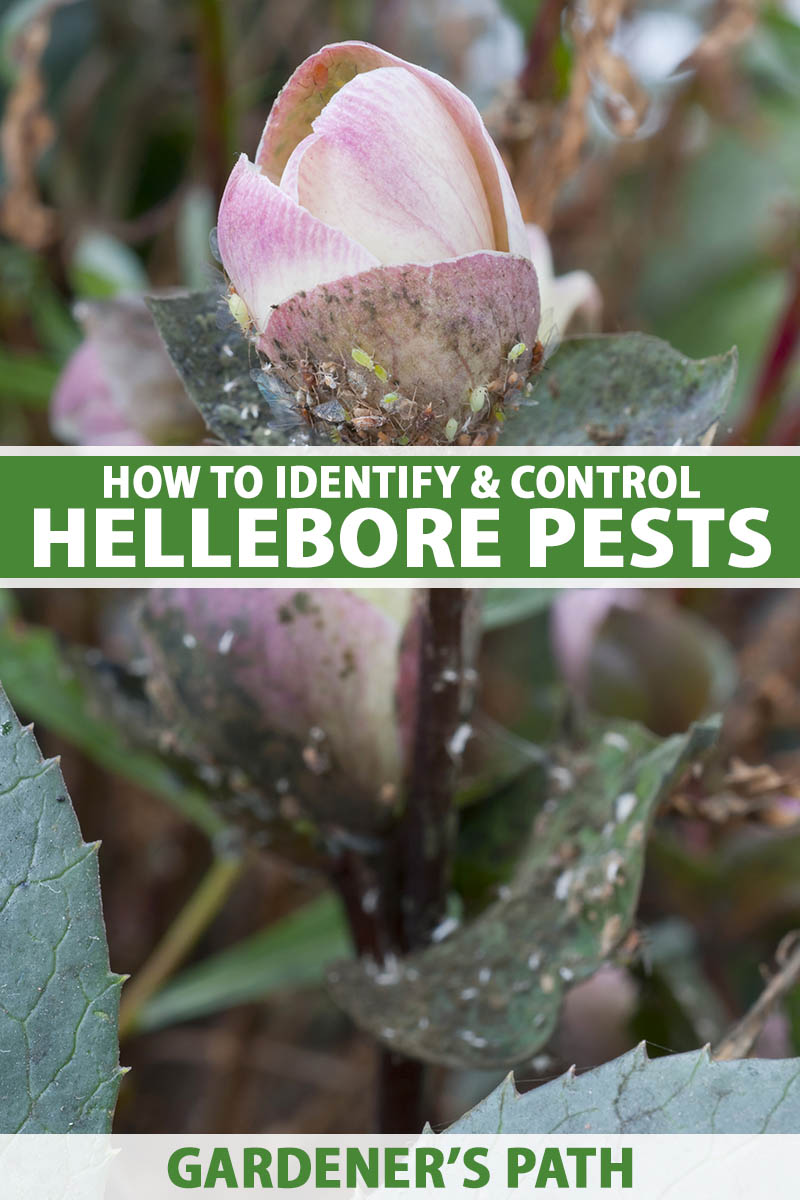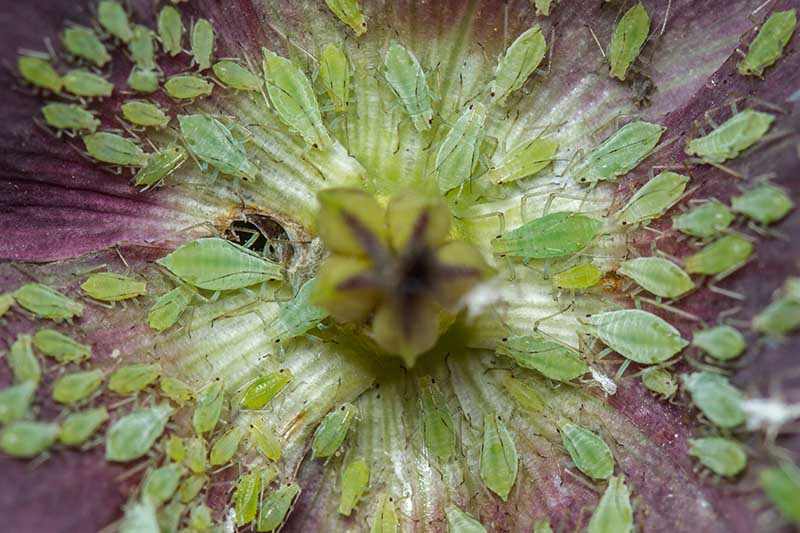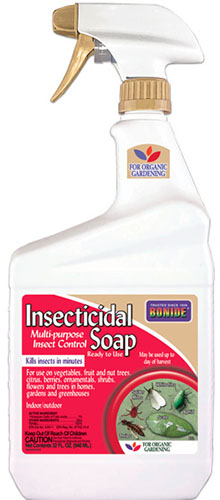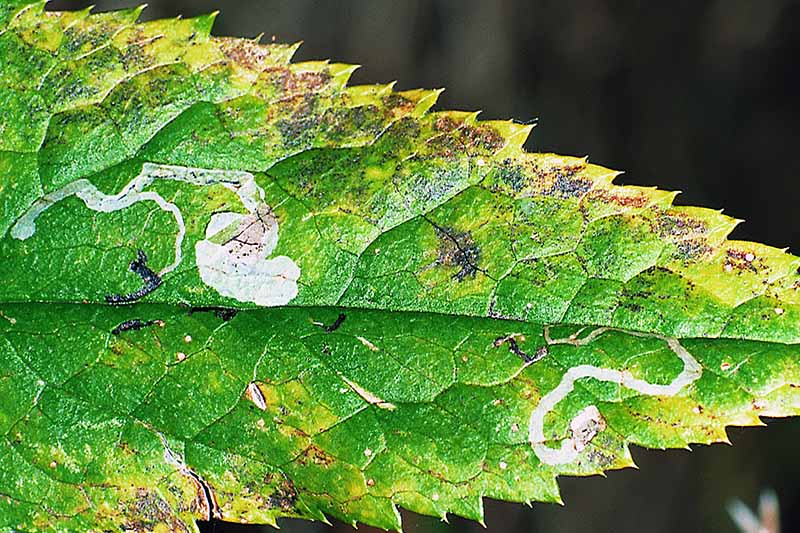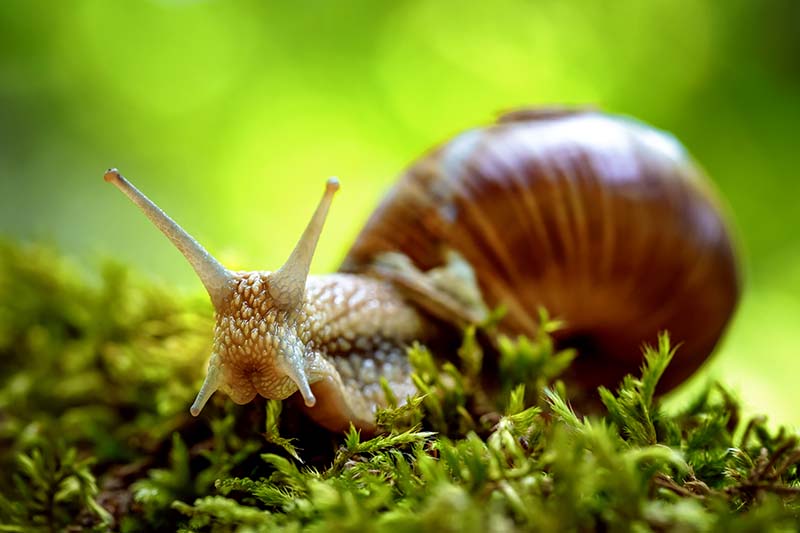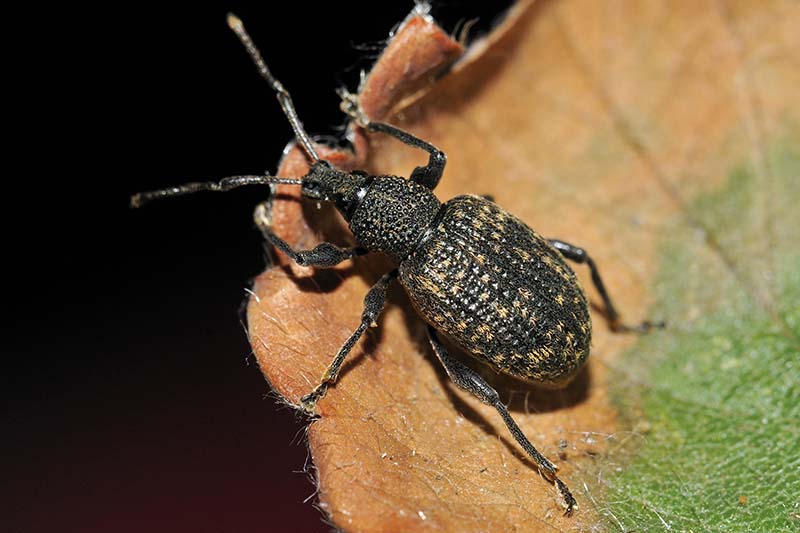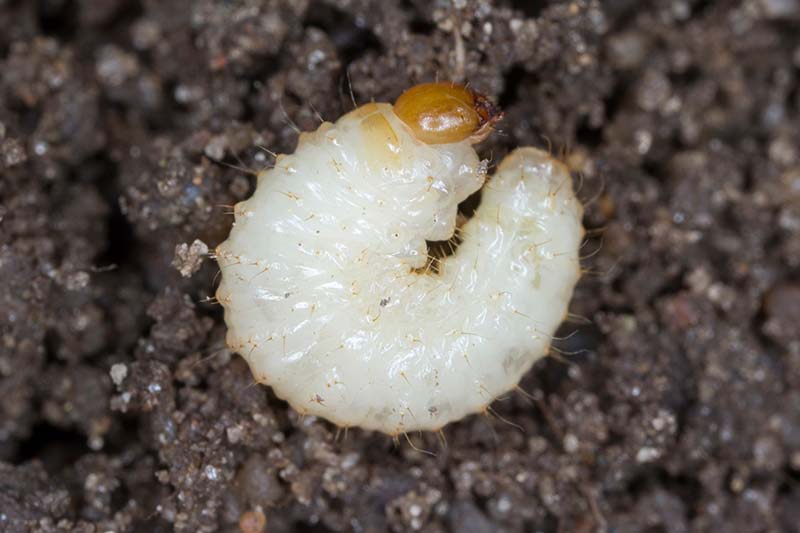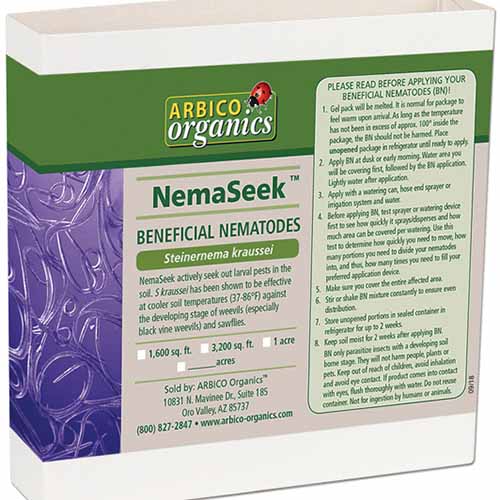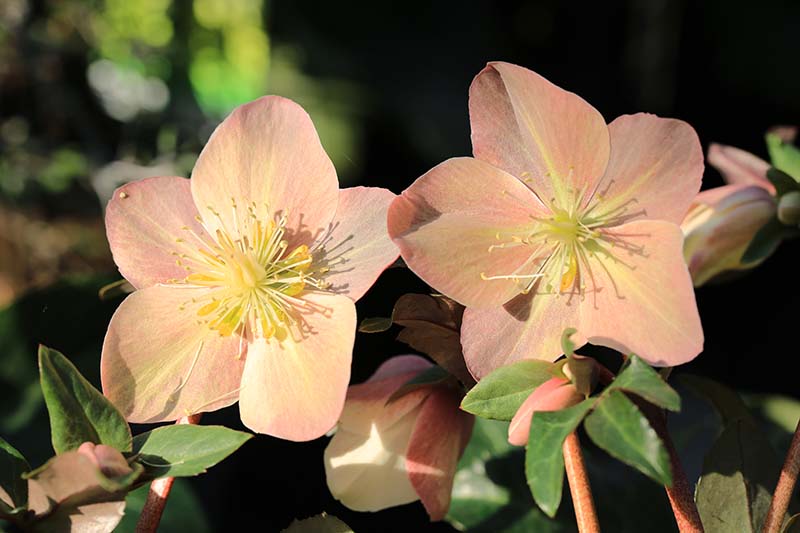These evergreen perennials don’t usually suffer from many issues with pests, and thanks to their toxicity, deer and rabbits avoid them. Our guide to growing hellebores covers the basics of how to cultivate these plants in USDA Hardiness Zones 4-9. We link to vendors to help you find relevant products. If you buy from one of our links, we may earn a commission.
1. Hellebore Aphids
The battle with aphids can sometimes feel never-ending. While several kinds of aphids have been reported to infest hellebores, the primary one to watch out for is the hellebore aphid, Macrosiphum hellebori. This particular pest is whitish-green and only attacks hellebores.
Sometimes aphids are visible as dense clusters on the leaves, flowers, or stems, but other times they hide on the undersides of the leaves, where they’ll be happily feeding and wreaking havoc without you even knowing they are there. The earlier you catch these sap-sucking pests, the better. They leave behind a sweet, sticky residue known as “honeydew” which attracts ants and sooty mold – a rather unpleasant dark covering of fungi on the leaves and flowers. The hellebore aphid is a particularly nasty pest because it is a vector for the virus Hellebore Net Necrosis virus (HeNNV), a pathogen that spreads black death. You can learn more about hellebore black death in our guide. So what’s a gardener to do? The first step is to check your plants regularly, especially on the undersides of the leaves to identify that you have a problem. If you only find a few insects, you can squash them between your finger and thumb, if that’s something you don’t mind doing. Alternatively, a strong blast of water from the hose can dislodge them – but you’ll need to careful not to damage the flowers. Do you want to learn more about aphids? Check out our guide.
Lacewing Larvae You can find green lacewing larvae available from Arbico Organics for release onto affected plants. Then you can sit back and relax in the knowledge that these beneficial insects are taking care of the problem for you. If the aphid infestation is out of control, covering large areas of your plants, you can consider an application of neem oil or Bonide® Insecticidal Soap.
Bonide® Insecticidal Soap You can find Bonide® Insecticidal Soap in ready-to-spray bottles available at Arbico Organics. Make sure you spray everywhere that is infested, including the undersides of the leaves. One problem with the organic sprays mentioned above is that they need to be reapplied frequently – every four to seven days. And if your aphids are anything like mine, they will be back. D-Fense SC Remember to exercise caution when using chemicals in your garden, and always follow the manufacturer’s directions for use.
2. Leaf Miners
Do you know what types of hellebores you are growing in your garden? One particular species has its very own specialized leaf miners – Phytomyza hellebori. What lucky plants! Helleborus foetidus, aka stinking or bearsfoot hellebore, is the only species affected. P. hellebori is a small, insignificant fly that lays eggs in the foliage of your plants – but that’s not what does the damage. When the eggs hatch, the larvae tunnel inside the leaves, munching on plant tissue as they go. If you look closely, you’ll notice small dark blotches on the leaves and little tunnels that may appear white or light brown in color. The flies typically lay their eggs in late summer, so the damage often goes unnoticed until the following spring. Thankfully, the damage doesn’t kill the plants, but it does disfigure them. Since the damage is just cosmetic, experts generally advise cutting off the damaged leaves and destroying them to prevent the larvae from pupating and producing another generation of adult flies. Because the larvae are ensconced within the leaves, according to the Royal Horticultural Society, insecticides are unlikely to control leaf miners. Read more about combating and controlling leaf miners here.
3. Slugs and Snails
Hellebores are highly susceptible to slugs. These slimy pests don’t just munch on the foliage, they can also sneak up the stalks and devour the flowers.
There are numerous options for controlling slugs and snails, from hand picking the slippery gastropods and feeding them to your chickens to wasting precious beer supplies in traps. The pellets expand to form a mat that slugs and snails can’t cross – keep in mind it doesn’t kill the slugs, just repels them.
Slug Gone It’s nontoxic, and comes in pellet form. It couldn’t be easier to use: simply sprinkle the compressed wool pellets around your planting area and water in well. If you need more tips for controlling slugs and snails, check out our guide.
4. Vine Weevils
Vine weevils, Otiorhynchus sulcatus, can be a menace to a wide range of plants growing in the garden and in containers. The adults typically don’t do too much damage, but the grubs can spell disaster for your hellebores.
The adult weevils are about 5/16 inch long and are black with dull yellow markings on their wing cases. They munch away on the foliage leaving irregular notches in the leaf margins. While this feeding may only result in some minor cosmetic damage, don’t ignore it, as it’s a signal of what may be happening underground. The adult vine weevils lay their eggs in the soil and when these hatch, C-shaped grubs with light brown heads emerge. They mature in the soil and feed on the roots and stem bases of your plants.
Unless you are very vigilant, this damage may go unnoticed until the plant wilts and dies. You can handpick the adults at night, or shake smaller potted plants over a large piece of paper to dislodge them. The beneficial nematode Steinernema krausseii, available from Arbico Organics, will kill vine weevil larvae.
NemaSeek Beneficial Nematodes To use, mix the nematodes with water, according to package instructions, and apply evenly over the area you are treating. You’ll need to do a second application after seven to 10 days. In the case of severe infestations, you may wish to do a third application.
A Few Major Pests
Fortunately, hellebores aren’t plagued by too many insect pests, and if you catch infestations early enough, you’ve got a good chance of resolving them without lasting damage to your plants.
Have you battled insect problems on your hellebores? If so, let us know how you fared in the comments section below. And while you’re thinking about hellebores, check out these guides for more information about growing these winter beauties:
How to Identify and Treat Hellebore Diseases 7 Tips for Planting Hellebore Seeds How to Divide and Transplant Hellebores
© Ask the Experts, LLC. ALL RIGHTS RESERVED. See our TOS for more details. Product photos via Arbico Organics, Bonide, and D-Fense. Uncredited photos: Shutterstock. With additional writing and editing by Clare Groom.

